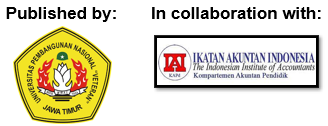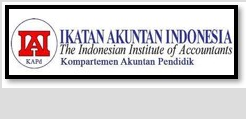Agency Control on Capital Market Efficiency: Evidence from Earnings Announcement
DOI:
https://doi.org/10.33005/jasf.v6i2.465Keywords:
Earnings announcement, market efficiency, IDX marketAbstract
This study investigates how agency control influences the market's response to new information disclosed during earnings announcements. The aim is to investigate the potential connection between agency control and market efficiency. The research employs an event study as the principal metric and ordinary least squares to evaluate the relationship between agency control and the firms' cumulative earnings announcement returns. This study analyzes the effect of earnings announcements on abnormal returns, utilizing 93,244 daily data from all listed firms between July 2018 and December 2019, specifically during the reporting of year-end financial statements as of December 31, 2018. The study reveals that firms under concentrated ownership and family control do not conform to the semi-strong form of market efficiency, as evidenced by the absence of significant abnormal returns during the event. Insignificant abnormal returns following earnings announcements indicate that the market has assimilated the firms' financial information before the announcement date, as these stakeholders possess privileged access to the firms' information well in advance of the announcements. As a result, the market no longer receives new information from the event or encounters any significant unforeseen news. Consequently, the study determines that agency control may affect the market efficiency of a capital market. The study advises policymakers to examine this issue and adopt measures to alleviate information asymmetry between controlling and non-controlling shareholders.
Downloads
References
Bebchuk, L. A., & Roe, M. J. (1999). A theory of path dependence in corporate ownership and governance. Stan. L. Rev., 52, 127. https://doi.org/10.2307/1229459.
Bhattacharya, N., Desai, H., & Venkataraman, K. (2013). Does earnings quality affect information asymmetry? Evidence from trading costs. Contemporary Accounting Research, 30(2), 482-516. https://doi.org/10.1111/j.1911-3846.2012.01161.x.
Brouty, X., & Garcin, M. (2023). A statistical test of market efficiency based on information theory. Quantitative finance, 23(6), 1003-1018. https://doi.org/10.48550/arXiv.2208.11976.
Campbell, C. J., & Wesley, C. E. (1993). Measuring security price performance using daily NASDAQ returns. Journal of financial economics, 33(1), 73-92. https://doi.org/10.1016/0304-405X(93)90025-7.
Chod, J., & Lyandres, E. (2021). A theory of ICOs: Diversification, agency, and information asymmetry. Management Science, 67(10), 5969-5989. https://doi.org/10.1287/mnsc.2020.3754.
Chiah, M., Chai, D., Zhong, A., & Li, S. (2016). A Better Model? An empirical investigation of the Fama–French five‐factor model in Australia. International Review of Finance, 16(4), 595-638. https://doi.org/10.1111/irfi.12099.
Choi, J. J., Lam, K. C., Sami, H., & Zhou, H. (2013). Foreign ownership and information asymmetry. Asia‐Pacific Journal of Financial Studies, 42(2), 141-166. https://doi.org/10.1111/ajfs.12010.
Chen, G., Firth, M., & Xu, L. (2009). Does the type of ownership control matter? Evidence from China’s listed companies. Journal of Banking & Finance, 33(1), 171-181. https://doi.org/10.1016/j.jbankfin.2007.12.023.
Chung, D. Y., & Hrazdil, K. (2011). Market efficiency and the post‐earnings announcement drift. Contemporary Accounting Research, 28(3), 926-956. https://doi.org/10.1111/j.1911-3846.2011.01078.x.
Claessens, S., Djankov, S., & Lang, L. H. (2000). The separation of ownership and control in East Asian corporations. Journal of Financial Economics, 58(1-2), 81-112. https://doi.org/10.1016/S0304-405X(00)00067-2.
Clauß, T., Kraus, S., & Jones, P. (2022). Sustainability in family business: Mechanisms, technologies and business models for achieving economic prosperity, environmental quality and social equity. Technological Forecasting and Social Change, 176, 121450. https://doi.org/10.1016/j.techfore.2021.121450.
Coffee Jr, J. C. (2005). A theory of corporate scandals: Why the USA and Europe differ. Oxford review of economic policy, 21(2), 198-211. https://doi.org/10.1093/oxrep/gri012.
Conz, E., Denicolai, S., & De Massis, A. (2024). Preserving the longevity of long-lasting family businesses: a multilevel model. Journal of Management and Governance, 28(3), 707–744. https://doi.org/10.1007/s10997-023-09670-z.
D’Este, C., & Carabelli, M. (2022). Family ownership and risk: the role of family managers. Corporate Governance: The International Journal of Business in Society, 22(6), 1161–1177. https://doi.org/10.1108/CG-09-2021-0338.
Doidge, C., Karolyi, G. A., Lins, K. V., Miller, D. P., & Stulz, R. M. (2009). Private benefits of control, ownership, and the cross‐listing decision. The Journal of Finance, 64(1), 425-466. https://doi.org/10.1111/j.1540-6261.2008.01438.x.
Dong, J. Q., Karhade, P. P., Rai, A., & Xu, S. X. (2021). How firms make information technology investment decisions: Toward a behavioral agency theory. Journal of Management Information Systems, 38(1), 29-58. https://doi.org/10.1080/07421222.2021.1870382.
El Kouiri, K. (2023). Exploring the Development of Agency Theory: Review of theory. Ibn Khaldun Journal for Studies and Research, 3(10). https://doi.org/10.56989/benkj.v3i10.698.
Ezzamel, M., Xiao, J. Z., & Yuan, R. (2020). Can small shareholders protect their interests from expropriation: The case of a Chinese bank. Management and Organization Review, 16(1), 139-168. https://doi.org/10.1017/mor.2019.23.
Fama, E. F., Fisher, L., Jensen, M. C., & Roll, R. (1969). The adjustment of stock prices to new information. International economic review, 10(1), 1-21. https://doi.org/10.2307/2525569.
Faulkender, M., & Petersen, M. (2012). Investment and capital constraints: repatriations under the American Jobs Creation Act. The Review of Financial Studies, 25(11), 3351-3388. https://doi.org/10.1093/rfs/hhs092.
Fama, E. F., & Jensen, M. C. (1983). Separation of ownership and control. The journal of law and Economics, 26(2), 301-325. http://papers.ssrn.com/abstract=94034.
Fan, J. P., & Wong, T. J. (2002). Corporate ownership structure and the informativeness of accounting earnings in East Asia. Journal of accounting and economics, 33(3), 401-425. https://doi.org/10.1016/S0165-4101(02)00047-2.
Fang, H. “Chevy,” Memili, E., Chrisman, J. J., & Penney, C. (2017). Industry and Information Asymmetry: The Case of the Employment of Non-Family Managers in Small and Medium-Sized Family Firms. Journal of Small Business Management, 55(4), 632–648. https://doi.org/10.1111/jsbm.12267.
Fos, V., & Holderness, C. G. (2023). The distribution of voting rights to shareholders. Journal of Financial and Quantitative Analysis, 58(5), 1878-1910. https://doi.org/10.1017/S0022109022000655.
Ghafoor, A., Zainudin, R., & Mahdzan, N. S. (2019). Corporate fraud and information asymmetry in emerging markets: Case of firms subject to enforcement actions in Malaysia. Journal of Financial Crime, 26(1), 95-112. https://doi.org/10.1108/JFC-11-2017-0107.
Harymawan, I., & Nismara, K. (2022). Board Gender Diversity and Corporate Innovation: Evidence from Indonesian Family Firms. Journal of Accounting and Strategic Finance, 5(1), 22–39. https://doi.org/10.33005/jasf.v5i1.224.
Huddart, S. J., & Ke, B. (2007). Information asymmetry and cross‐sectional variation in insider trading. Contemporary Accounting Research, 24(1), 195-232. https://doi.org/10.1506/0277-1110-4434-M627.
Huynh, T. L. D., Wu, J., & Duong, A. T. (2020). Information Asymmetry and firm value: Is Vietnam different?. The Journal of Economic Asymmetries, 21, e00147. https://doi.org/10.1016/j.jeca.2019.e00147.
Jabeen, M., & Shah, A. (2011). A review on family ownership and information asymmetry. African Journal of Business Management, 3(35), 13550-13558. https://ssrn.com/abstract=1983438.
Jamadar, Y., Ong, T. S., Kamarudin, F., & Abdullah, A. A. (2022). Future firm performance, corporate governance, information asymmetry and insider trading–a systematic literature review using PRISMA. International Journal of Sustainable Economy, 14(3), 309-329. https://doi.org/10.1504/IJSE.2022.123878.
Jan, C. L. (2021). Financial Information Asymmetry: Using Deep Learning Algorithms to Predict Financial Distress. Symmetry 2021, 13, 443. https://doi.org/10.3390/sym13030443.
Kellermanns, F. W., & Eddleston, K. A. (2004). Feuding families: When conflict does a family firm good. Entrepreneurship theory and Practice, 28(3), 209-228. https://doi.org/10.1111/j.1540-6520.2004.00040.x.
Jiang, H., Habib, A., & Hu, B. (2011). Ownership concentration, voluntary disclosures and information asymmetry in New Zealand. The British Accounting Review, 43(1), 39-53. https://doi.org/10.1016/j.bar.2010.10.005.
Liu, M., Shi, Y., Wilson, C., & Wu, Z. (2017). Does family involvement explain why corporate social responsibility affects earnings management?. Journal of business research, 75, 8-16. https://doi.org/10.1016/j.jbusres.2017.02.001.
Lumpkin, G. T., Brigham, K. H., & Moss, T. W. (2010). Long-term orientation: Implications for the entrepreneurial orientation and performance of family businesses. Entrepreneurship & regional development, 22(3-4), 241-264. https://doi.org/10.1080/08985621003726218.
Martinez-Garcia, I., Basco, R., Gomez-Anson, S., & Boubakri, N. (2022). Ownership concentration in the Gulf cooperation council. International Journal of Emerging Markets, 17(1), 219-252. https://doi.org/10.1108/IJOEM-03-2020-0290.
Martínez-Ferrero, J., Rodríguez-Ariza, L., García-Sánchez, I. M., & Cuadrado-Ballesteros, B. (2018). Corporate social responsibility disclosure and information asymmetry: the role of family ownership. Review of Managerial Science, 12, 885-916. https://doi.org/10.1007/s11846-017-0232-5 .
Minenna, M. (2003). Insider trading, abnormal return and preferential information: Supervising through a probabilistic model. Journal of Banking & Finance, 27(1), 59-86. https://doi.org/10.1016/S0378-4266(01)00209-6.
Nam, S. W., & Nam, I. C. (2004). Corporate governance in Asia. Asian development bank institute, 1-211. https://www.adb.org/sites/default/files/publication/159384/adbi-corp-gov-asia.pdf.
Patra, S., & Hiremath, G. S. (2022). An entropy approach to measure the dynamic stock market efficiency. Journal of Quantitative Economics, 20(2), 337-377. https://link.springer.com/article/10.1007/s40953-022-00295-x
Pindado, J., Requejo, I., & De la Torre, C. (2014). Family control, expropriation, and investor protection: A panel data analysis of Western European corporations. Journal of Empirical Finance, 27, 58-74. https://doi.org/10.1016/j.jempfin.2013.10.006.
Porta, R. L., Lopez-de-Silanes, F., Shleifer, A., & Vishny, R. W. (1998). Law and finance. Journal of political economy, 106(6), 1113-1155. https://doi.org/10.1086/250042.
Pernamasari, R. (2022). The Effect of Earnings Management and Profitability on Stock Prices Future: Information Asymmetry as Moderating. Asian Journal of Economics, Business and Accounting, 22(16), 9-16. https://doi.org/10.9734/ajeba/2022/v22i1630631.
Raimo, N., Vitolla, F., Marrone, A., & Rubino, M. (2020). The role of ownership structure in integrated reporting policies. Business Strategy and the Environment, 29(6), 2238-2250. https://doi.org/10.1002/bse.2498.
Richardson, V. J. (2000). Information asymmetry and earnings management: Some evidence. Review of quantitative finance and accounting, 15, 325-347. https://link.springer.com/article/10.1023/A:1012098407706.
Romito, S., & Vurro, C. (2021). Non‐financial disclosure and information asymmetry: A stakeholder view on US listed firms. Corporate Social Responsibility and Environmental Management, 28(2), 595-605. https://doi.org/10.1002/csr.2071.
Shiri, M. M., Salehi, M., & Radbon, A. (2016). A study of impact of ownership structure and disclosure quality on information asymmetry in Iran. Vikalpa, 41(1), 51-60. https://doi.org/10.1177/0256090915620876.
Siregar, S. V., & Utama, S. (2008). Type of earnings management and the effect of ownership structure, firm size, and corporate-governance practices: Evidence from Indonesia. The international journal of accounting, 43(1), 1-27. https://doi.org/10.1016/j.intacc.2008.01.001.
Sorescu, A., Warren, N. L., & Ertekin, L. (2017). Event study methodology in the marketing literature: an overview. Journal of the Academy of Marketing Science, 45, 186-207. https://link.springer.com/article/10.1007/s11747-017-0516-y.
Suharsono, R. S., Nirwanto, N., & Zuhroh, D. (2020). Voluntary disclosure, financial reporting quality and asymmetry information. Journal of Asian Finance, Economics and Business, 7(12), 1185-1194. http://dx.doi.org/10.13106/jafeb.2020.vol7.no12.1185.
Suryaningrum, D. H. (2012). Knowledge Management and Performance of Small and Medium Entities in Indonesia. International Journal of Innovation and Technology Management, 3(1), 35–41. https://papers.ssrn.com/sol3/papers.cfm?abstract_id=2686887.
Wang, J., & Wang, X. (2021). COVID-19 and financial market efficiency: Evidence from an entropy-based analysis. Finance Research Letters, 42, 101888. https://doi.org/10.1016/j.frl.2020.101888.
Weiss, D. (2014). Internal Controls in Family-Owned Firms. European Accounting Review, 23(3), 463–482. https://doi.org/10.1080/09638180.2013.821814.
Widagdo, A. K., Rahmawati, R., Murni, S., Wulandari, T. R., & Agustiningsih, S. W. (2021). Corporate Governance, Audit Quality, Family Ownership and Earnings Management. KnE Social Sciences. https://doi.org/10.18502/kss.v5i5.8839.














